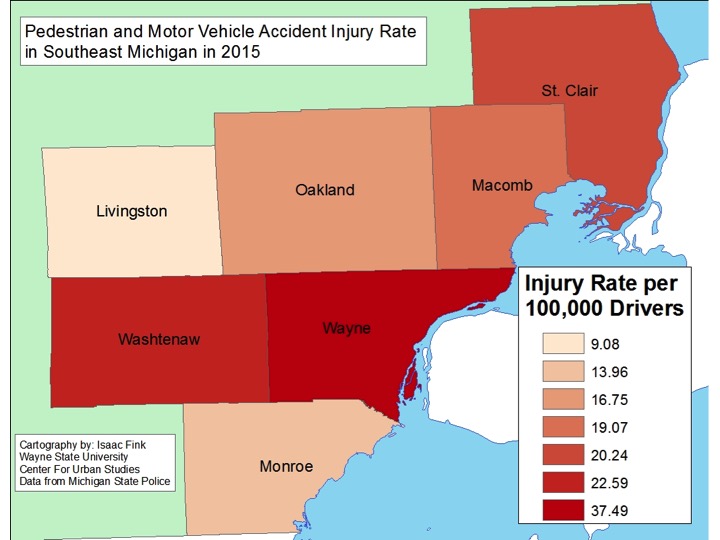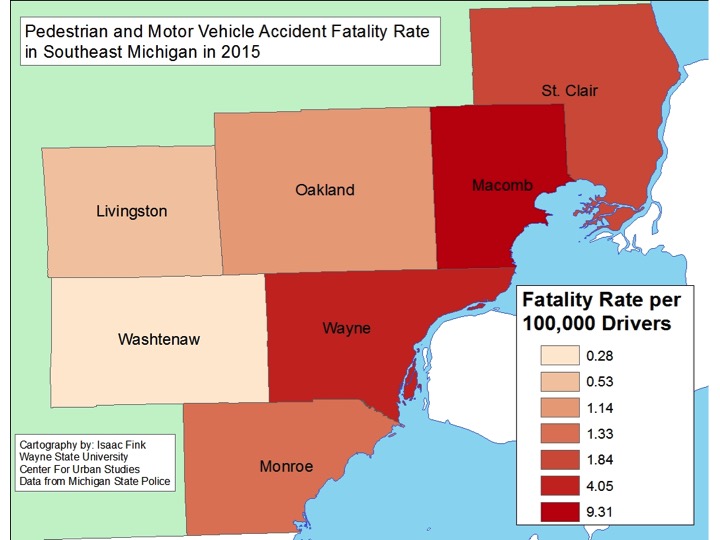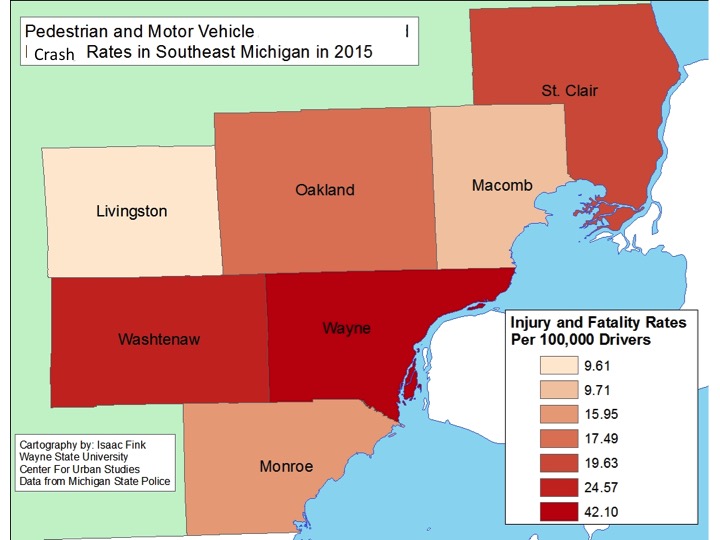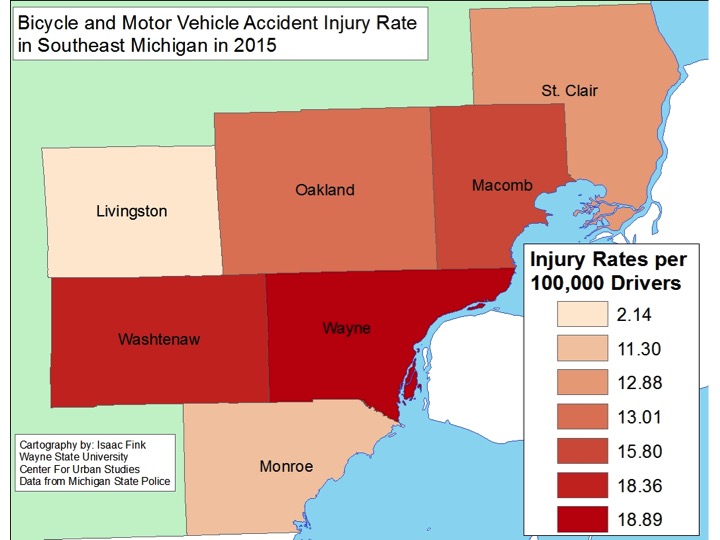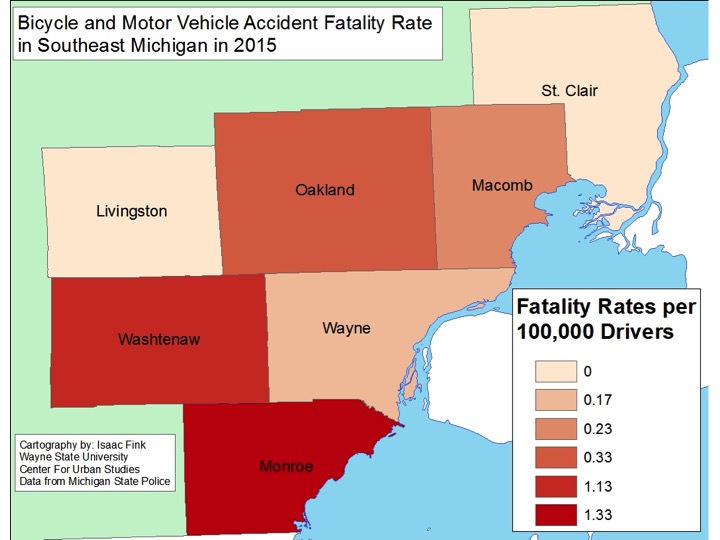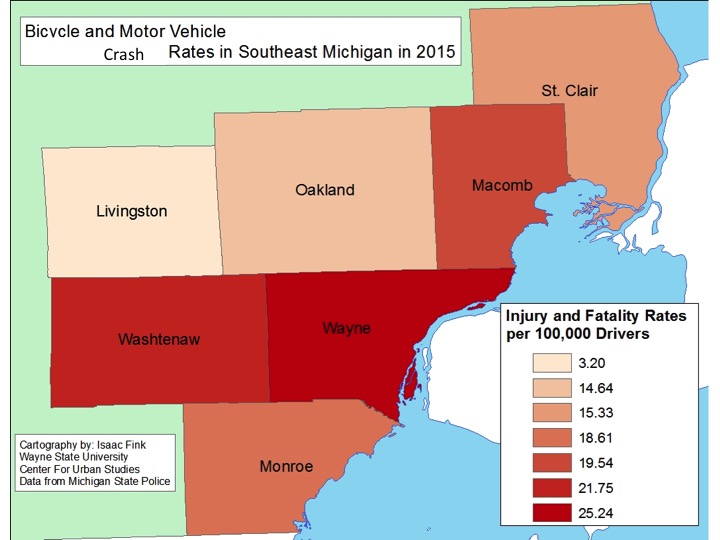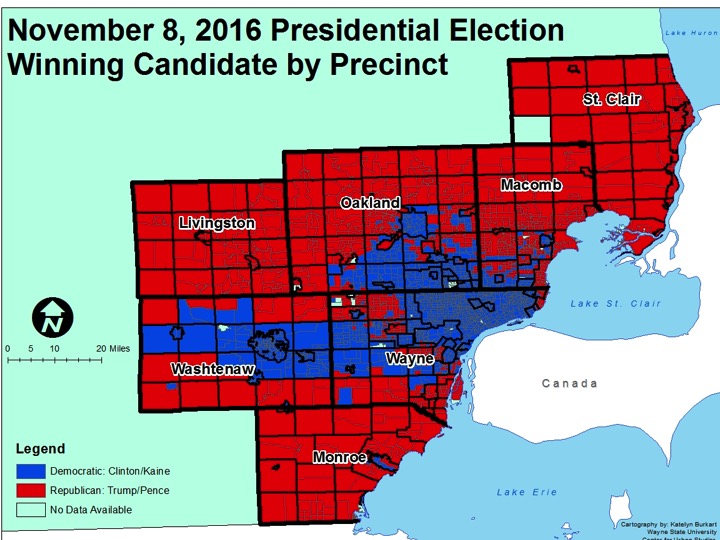This post presents the rate of injuries and fatalities for vehicle crashes involving pedestrians and bicycles in all counties throughout Southeastern Michigan in 2015, according to the Michigan State Police. The rates in this post were calculated per 100,000 residents.
Wayne County had the highest injury and total crash rates for both pedestrian-vehicle crashes and bicycle-vehicle crashes. In total, Wayne County had a pedestrian-vehicle injury rate of 37 and a total pedestrian-vehicle crash rate of 42. These rates represent a total of 667 pedestrian-vehicle injuries in 2015 in Wayne County and 749 total pedestrian-vehicle crashes in Wayne County in 2015, according to the Michigan State Police. When examining the rate for pedestrian-vehicle fatalities, Macomb County had the highest rate in the seven county region at 9. In Macomb County in 2015 there were a total of 15 fatalities involving a pedestrian and a vehicle. Wayne County had a total of 72 fatalities from the same type of vehicle accident; this was equivalent to a rate of 4. Livingston County had the lowest rate of fatalities and injuries, with rates of 0.5 and 9, respectively.
As noted earlier, Wayne County had the highest bicycle-vehicle injury rate in the region at 18.9 per 100,000 residents, with Washtenaw County only slightly behind at 18.4. When looking at the raw data though, there was a total of 336 bicycle-vehicle crashes in Wayne County, there was 72 in Washtenaw County. Monroe County had the highest bicycle-vehicle fatality rate at 1.3 per 100,000 residents with a total of 2 fatalities caused by such accidents in 2015. Washtenaw County came in just below Monroe County with a rate of 1.1 with a total of 4 bicycle-vehicle fatalities; there were also 4 bicycle-vehicle crash related fatalities in Oakland County in 2015 with a rate of 0.3. Livingston and St. Clair counties had zero related bicycle-vehicle related fatalities.
For the total crash bicycle-vehicle crash rates, Wayne County had the highest at 25 per 100,000 residents, with a total of 449 crashes. Livingston County had the lowest rate at 3 with a total of 6 bicycle-vehicle crashes.
According to Smart Growth America, the Metro-Detroit area is ranked 17th of 104 nationwide metropolitan areas for most dangerous areas for pedestrians, due to the number of pedestrian deaths in the region between 2005-14. This study cited street design as one of the reasons for the total number of deaths. Additionally, the Macomb Daily recently cited distracted driving as a reason for the increased number of vehicle related fatalities, including pedestrian and bicycle related ones, over the last several years. This article said distracted driving included cell phone use and being under the influence of drugs and alcohol.
